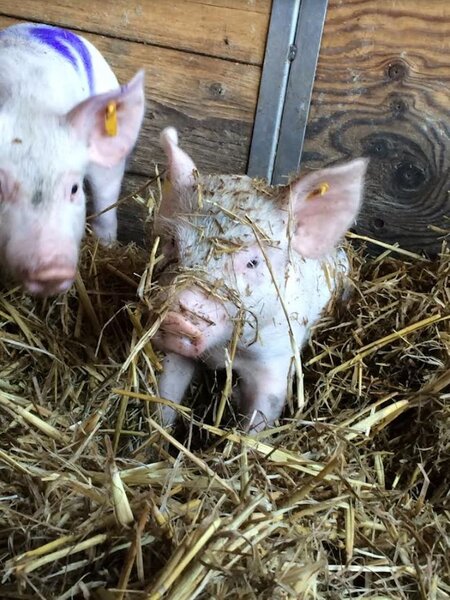Create a free profile to get unlimited access to exclusive videos, sweepstakes, and more!
What’s in a grunt? Decoding the meaning behind pig vocalizations
When we grunt, it's usually negative. When a pig grunts, it could mean anything.

A new paper published in the journal Scientific Reports demonstrates how Elodie Briefer from the Institute of Agricultural Sciences at ETH Zurich, and colleagues, have made progress toward decoding the language of pigs. The findings can’t interpret pig vocalizations into anything resembling human speech, but they were able to drill down to a specific emotion or set of emotions based on the characteristics of a pig’s grunts.
Scientists used high quality directional microphones or digital recorders to gather recordings from 411 pigs over the course of their lifetime, from birth to death, resulting in more than 7,000 recordings of pig vocalizations. That database of sound allowed researchers to analyze the characteristics of different calls and bump them up against certain situations which were easily recognizable as positive or negative.
“We used what is known in emotional research as a two-dimensional framework,” Briefer told SYFY WIRE. “We categorized emotions according to their valence, whether they were positive or negative, and their intensity. Basically, we looked at arousal or body activation.”
Certain scenarios are easily recognizable as negative and were largely defined as situations which would decrease an individual pig’s chances of survival. Social separation, fighting, crushing, castration, and waiting in the slaughterhouse were some of the most common scenarios which resulted in negative emotion calls. Conversely, positive situations like a reunion with a mother, nursing, cuddling, or enrichment activities resulted in a different sort of calls. Using those situations and their corresponding calls as a framework, scientists were able to teach a machine learning algorithm to recognize different call types and associate them with emotions.
“We know from our research and from the literature that these contexts are associated with typical positive and negative behavior in pigs,” Briefer said. “A typical negative behavior would be calling a lot or trying to escape an enclosure, while exploring the environment is positive.”
There’s scientific value in deciphering non-human animal communication, just for the pure knowledge of it, but it could also become a useful tool for farmers or pet owners, by allowing them to gain clearer insight into the emotional well-being and therefore the health and happiness of the animals in their care.
Now that the database of vocalizations and the algorithm for deciphering them exist, all that’s needed is a user-friendly interface for recording and decoding pig vocalizations.
“The main aim we wanted to reach was to build an app that could record a group of pigs and then stratify the calls according to their valence. It would warn the farmer if there’s a certain threshold of negative calls being produced or tell the farmer if the welfare of their pigs is good,” Briefer said.
The study had originally intended to build such an app in the course of the work, but the team was ultimately unable to complete that portion of the project. They’re now looking for partners who might be able to take their app and database and build something which could be used on the ground level.
Even more exciting is the future potential of this sort of vocal interpretation model. Presumably, any species which demonstrates variable situational vocalizations could be analyzed and decoded in a similar way.
“We’re looking on a smaller scale, at the vocal expression of emotions in goats, horses, sheep, and cows. The structure of their calls also changes based on emotion, so it should be possible. But we’ll need a huge database of vocalizations,” Briefer said.
Imagine a world where you can get an emotional readout of your animals, be they house pets, zoo animals, or farm animals, and use that information to make informed decisions about their diet, enrichment, or other elements impacting quality of life.
It’s hard to know how to help someone if you don’t have a foundation for communication. At least with pigs, now we do.



























